PellucidWombat - May 26, 2010 6:55 am - Hasn't voted
Re: Reasons for risk...I'm glad you appreciated it!
requiem - May 17, 2010 2:31 pm - Hasn't voted
Well said!Thanks for the write-up!
PellucidWombat - May 26, 2010 7:05 am - Hasn't voted
Re: Well said!Thanks for the compliment! Hopefully I can develop this account of personal reasons further as I have time to reflect more.
Augie Medina - May 18, 2010 5:47 pm - Voted 10/10
Beautiful Memorialto your friend.
PellucidWombat - May 26, 2010 6:57 am - Hasn't voted
Re: Beautiful MemorialThanks! I think these little reflections and celebrations are in keeping with Tom's spirit of embracing life in the outdoors.
sadeki - May 20, 2010 2:56 am - Hasn't voted
No Better WayI cannot think of a more appropriate way to remember Tom.
At least his memory and more importantly celebration of his life has been captured and shared with the world.
Hang in there.
Ismail
Johannesburg, South Africa
PellucidWombat - May 26, 2010 6:59 am - Hasn't voted
Re: No Better WayIsmail, I'm happy to hear that this intent is getting across. :-)
PellucidWombat - May 24, 2010 4:05 pm - Hasn't voted
Re: My thoughts on thisI've given a lot of thought to that, but you're extrapolating from a lot of incomplete information for that judgement. As time goes on it seems that I tend to have incredibly bad & good luck, whether I am climbing or not.
Ask the people who I've climbed with and they will tell you that I am probably the more conservative or wary member in the group, and extremely diligent in educating myself in safe climbing techniques and habits,* yet close calls and accidents seem to happen to me while leaving those around me unscathed.
On Shasta, what caused the whole tragedy was Tom developing severe HACE with no warning despite having an ascent rate that should have been good acclimatization for someone who was strong at altitude. Everyone involved in SAR and high altitude medicine who I have asked for insight said they thought this was a freak accident that couldn't have been forseen, so I have trouble seeing any link between Shasta and Nebo (where I did make a stupid mistake) apart from bad luck.
On Nebo, which was an innocent mistake that I'm sure plenty of people have done often (ever since then I have never followed someone like that, yet I have trouble getting a lot of my climbing partners to travel with this attitude), I was the only one to bear the brunt of the accident despite me being the most wary of the hazard in the group.
I'd consider the media exposure on a similar note of bad luck. Those heading the Shasta rescue operations didn't get why the media was so interested, except that it happened to be a slow news week. Ditto with Nebo (the story immediately disappeared when SoCal caught fire).
There have been numerous other incidents of this 'bad luck', such as this spring when Kirkwood ski patrol kicked off an avalanche in-bounds in an open area, and I was the only one on the popular traverse across the bowl to get caught in it (the people who left 30 seconds before me or after me were fine. I am now wearing a beacon whenever I ski at resorts on powder days). On another year, I was the 3rd of 4 people descending a 2nd class scree slope, yet it was my footsteps that caused the entire face to slide, nearly taking me with it. Frankly, I don't think I was being reckless in either of these two instances.
On a similar note, I've nearly been run over by vehicles many times, and most of the incidents have occurred on crosswalks halfway across the street at stop signs or on protected lights, or while I'm on a sidewalk! I can recall plenty of instances of this weird luck on my bicycle too. If this sort of luck eventually kills me, I think it will happen whether I am in the mountains or not.
*For example, the fact that I looked at what I did wrong on Mt Nebo and shared it openly on SP. I also didn't take it down during the Shasta tragedy for 'image control', which should indicate how I viewed that incident. If I were just a "route junkie" or "glory climber" as you infer, then this attitude towards attempting to learn from mistakes and share the lessons with others seems out of character with that image.
PellucidWombat - May 24, 2010 4:47 pm - Hasn't voted
Re: My thoughts on thisone other note about your judgement without knowing the details:
If anyone were in a position to say that my actions and/or Tom's in this case were reckless, it would be the SAR climbers, or Tom's family and climbing friends in Canada. Yet these same people had been supportive of me continuing to climb despite me telling them about what happened on Mt Shasta and Mt Nebo (and I have disclosed the Nebo accident to many of my climbing partners, including Tom).
Marmaduke - May 24, 2010 5:13 pm - Voted 10/10
Re: My thoughts on thisWow!!! The insinuations here are incredible. Quite frankly, sums up your character. Sorry Eric, I don't know you or Mark but to throw that stuff out there, speaks volumes of you. Since we're being so frank here, I'll throw my two cents in.
Augie Medina - May 24, 2010 5:58 pm - Voted 10/10
Re: My thoughts on thisThese may be your "thoughts" but they were not well considered. At bottom, you are implying that the two incidents arose from the man's desire to bring "national attention" on himself. This is a harsh judgment and really, a character assault, with no basis that I can fathom. What's more, you claim to divine something in his Nebo TR that suggested he was a danger to himself and to others? Again, I must have completely missed those clues.
Your reference to getting "someone else killed" was the most ill considered comment of all since the reasonable interpretation is that you're referring to PW's partner on Mt. Shasta. The stuff that I've read is pretty darn convincing that PW did nothing to put his partner's life in danger at any time.
PW's response to you was a model of restraint. You are of course entitled to your views, but I think you were precipitous in pulling out your blunderbuss and spraying your conjecture on someone healing from a trauma.
Finally, I know we all react without thinking sometimes. But this is a particularly sensitive matter to be weighing in on without deep consideration of what you're really saying and without a solid foundation.
MichaelJ - May 25, 2010 3:36 am - Hasn't voted
Why climbA well-considered and truly moving piece, Mark. I'm sorry you had to write it.
PellucidWombat - May 26, 2010 7:00 am - Hasn't voted
Re: Why climbMichael,
Coming from a professional writer like you, I really appreciate the compliment. I imagine you can understand when I say that at least writing things like this has been cathartic . . .
ridgeguy - May 25, 2010 11:20 am - Hasn't voted
Since you askedSince you asked "Where did I make a stupid mistake"? Let me tell you.
As you explained, you post your stories on-line so others can learn from your mistakes. It is a climbers responsibility to dissect any mountaineering incident in order to learn from the mistakes. If not, you must not have a self-preservation trigger in your body. Growing up in the shadow of Mt. Rainier, I learned from the mistakes of the dozens of climbers who died or got in over their heads. Most incidents had at least one or two of the 6 reasons I list below, reasons that your climbing team got in trouble. This wasn't exactly a "freak accident", there were some bad decisions. Although his H.A.C.E. was a unforeseen circumstance, you did place yourselves in a bad situation where a bad outcome was much more likely.
Here are the issues.
1) You chose to be high on the mountain as darkness fell. (Is this really true!)
2) You chose a more difficult route with a more difficult decent.
3) You chose to camp near the summit above 14,000 feet without proper acclimatization.
4) You chose to continue to the summit when the weather was turning bad.
5) You had inexperience with the type of weather a volcanic peak on the west coast can create and the warning signs of dangerous weather.
6) You were lacking the proper gear for intense weather. Placing wands to the summit would have given you the confidence to descend during a storm instead of trying to wait out the storm, a typical death sentence on these peaks. Storms last for days, you can't afford to "hang out" at the summit. Wands are an essential piece of gear that few climbers outside the northwest realize.
I've been in your exact position on the summit of Rainier, in winter, in a ice storm so bad I weighed an extra 5 pounds from the ice. The difference was I didn't accept any of the 6 risks that you took above. Accept your mistakes. You shouldn't have spent the night up there. You took higher than usual risks. We all do at times. But, the fact that this is not the first time you have received national attention for your climbing accidents, it does raise red flags as to your overzealous pursuits when you lack experience. Too many climbers want too much too fast without putting in the time to learn the ropes. You can buy all the best gear and train in the gym all you want but it won't get you the skills needed to survive the obstacles of mountaineering. It's sad nobody on this form has the stomach to tell you these things.
Surviving a 1,000 ft Fall on Mt Nebo
I'm sure there are a few mistakes in this article but it's close enough:
"On Friday, they made it to the summit and began to descend the Whitney-Bolam Ridge in the dark. But the winds blew hard that night. They decided the best plan was dig a snow cave at 14,050 feet, about 100 feet below the summit, and leave at first light Saturday morning. The only fear Thomas and Bennett had of spending the night that high up was hypothermia. "Sleeping up there wasn't that big of a deal," Thomas said. "Other than you didn't have the convenience of your tent. But those winds would have shredded a tent. We were fine with staying right where we were because it was the safest decision."
Thomas had worked as a cold-water lifeguard and knew the symptoms of hypothermia, so he and Bennett talked to each other through the night, checking for signs of disorientation. They didn't feel any colder as the night progressed. They talked about how they couldn't wait for sunlight. They talked about the things friends talk about: Thomas is a structural engineer and Bennett a chemical engineer. "We'd talk about how these mathematical ideas manifest themselves in nature," Thomas said, such as strength and the beauty of a crevasse. By morning, the two men gathered their things, and as Bennett put on his crampons, he told Thomas his balance was off. Then he complained of fading eyesight.
Thomas asked Bennett questions to check his lucidity. He said Bennett shook it off, and insisted his eyesight was improving. But shortly after that, Bennett started to fear that he couldn't make it down. Thomas tied himself to his partner with a short rope to help Bennett descend. They moved slowly. Thomas felt the winds pick up and blow the two men off course. They tried moving along on their knees.
"I was having trouble myself," Thomas said of fighting the wind. "There was no way I could save someone else." Thomas then used his cell phone to dial 911. The cold weather had chilled the batteries. But he warmed up the phone and managed to make one rescue call to a ranger before the phone failed.
With the winds picking up and daylight fading, he dug a snow cave and moved Bennett inside. Bennett was unresponsive, Thomas said. He administered CPR. "In the back of my mind I kept hoping I was wrong," Thomas said. Thomas set aside the rations for Bennett in case he woke up. Thomas marked the spot with a black avalanche marker and headed down the mountain alone. "It was a complex feeling," Thomas said. "I was scared that I wasn't going to make it out of there myself. I was absolutely sure Tom was deceased, and I was sad that Tom was gone. But I couldn't stay any longer."
After Thomas set out on his own, the winds again pushed him of course, forcing him northwest. At times, the snow limited visibility to about an arm's length.
"I knew every decision I made was critical," Thomas said. "I became very careful with everything I did." By nightfall, Thomas realized he hadn't eaten or drunk water all day.
He dug a snow cave for himself, dried his clothes and got a little sleep. In the morning, he ate the last of his food and was able to get cell phone reception long enough to arrange for rangers to meet him at a nearby road. When he saw the snowmobile, he felt some relief. "And anxiousness," he said. "I wanted to get things together long enough to tell them exactly where to find Tom. I was still hoping that I was wrong."
PellucidWombat - May 25, 2010 12:26 pm - Hasn't voted
Re: Since you askedFor the public record here for those that read this post, Eric Willhite had earlier inferred that I am an accident waiting to happen, that I got Tom Bennett killed out of my own negligence, and that I am using such accidents to heap media attention upon myself. He bases this off of nothing more than an armchair attitude, stating SPECIFICALLY in his defense that he is extremely judgmental, and infers that his 20 years of 'climbing' leaves him in a position to make such claims. He has already made these serious and extremely vitriolic judgments without knowing more details about me, Tom, or the tragedy, and he never bothered to ask. Somehow his experience bagging easy summits makes him so experienced that he doesn't need to know details. He doesn't even need to know people, what they have climbed, how they have trained, or how long they have climbed in order to call them inexperienced. As I said before, considering that experts who deal with Mt. Shasta, climbing, and altitude found nothing wrong with what I did based on the FULL story, Eric is blowing a lot of hot air.
And FYI, he deleted these earlier posts under the thread title "My Thoughts on This", probably to make himself look better composed in his latest attack. I have chosen to leave mine because I have nothing to hide. Eric Willhite's actions will speak for themselves, and Eric, I'm copying your posts, so if you attempt to delete any more of them to hide what you are, I will repost them for full disclosure.
Man, after you deleted your earlier thread out of claiming you didn't intend to say what you meant to say, it's obvious to me that you just wanted to retreat in order to gather more ill-thought out fodder to lob at me. You've been exuding hubris in almost everything you say, so I'm not going to respond to your claims of "mistakes" since you're still basing them off of very general information and gross simplifications of a complex situation. It is these subtleties that make the difference between your claims of negligence and the vastly differing opinions of experts, which you claim to be, but are not, Mr. Self-Professed Peakbagger of mostly low altitude, cl. 2-3 summits, often with your children in tow. (That's all great, but I'm merely pointing out years spent 'climbing' and number of peaks bagged does not mean experience. Quality over quantity.)
Eric Whillhite, this is going to be my last response to you, and I've only responded because at a glance from the casual observer, your arguments hold merit, so I'm shooting them down with the facts before they can gain any hint of legitimacy. I'm not going to respond to the specific points of your tirade except to let you know now that you were NOT in the exact position I was. Already you've told me enough to tell me that your experience on Rainier was vastly different than mine on Mt. Shasta, though you're claiming that there is no difference.
I'll put up my report for those on SP who genuinely care about what happened beyond the basic newspaper reports, let it speak for itself, and if you're still not satisfied, you can just shove it.
Marmaduke - May 25, 2010 12:46 pm - Voted 10/10
Re: Since you askedHeeeee's Back....What an egotistcal, pompous ass. Again, I don't know Mark so I'm not some close buddy defending him. I am seeing you and only you making these type of accusations and character slander. Not one other person in this site and there are a lot of huge egos with their opinions, have offer this line of thinking you have.
Augie Medina - May 25, 2010 4:18 pm - Voted 10/10
Re: Since you askedI don't know Mark/PellucidWombat so I have no personal bias. I don't know you either so this is not personal. When I first replied to your initial hard-edged post you responded to me in a post that you have now deleted, as well as deleting your original post. I give you credit for deleting your original b/c it was unnecessarily insensitive. In the second of your deleted posts you stated up front that you were a judgmental person but at the end of your post you seemed to back off and said something to the effect that you hadn't intended to contend that Mark's decisions (which apparently you had predicted from his Mt. Nebos TR) cost his partner his life. I was tempted to reply that your first post wasn't consistent with your new position that you had been misconstrued. I didn't reply b/c I figured you had maybe concluded that although your avowed intention was educational, you had fired off an overly heavy-handed critique and would just let things be.
Now you've come back around to attempt to fortify your first post arguing that your upbringing "in the shadow of Mt. Rainier" and some article you read on this incident enables you to spotlight 6 "bad decisions" that Mark made that culminated in the death of his partner.
But frankly, your analysis simply doesn't hang together. As examples, one of the 6 bad decisions is that they chose "a harder route" on ascent and descent. Harder than what? Another of the "bad decisions" was that they "chose to camp near the summit." But the very article you quote is clear that this was not a voluntary decision. You also accuse them of "inexperience" with the weather around Shasta." How do you know that? I'll stop there.
I find it interesting that you claim you found yourself in "the exact position" on Rainier one time as these two. Yet there were no bad decisions involved on your part?
So you've had your say as is your right. I don't blame Mark for saying that he isn't going to respond back to you. I hope he doesn't regret writing his article here because it was a moving tribute and I sense part of his healing process.
Diggler - May 26, 2010 1:30 pm - Voted 10/10
Re: Since you askedPerhaps some analysis of your own "safety" guidelines might allow you to learn to be a more competent mountaineer as well, & maybe even a better human being. For the record, Mark's own informed self analyses are far harsher than those of someone with less ability & experience (dozens of lesser peaks aside).
1) You chose to be high on the mountain as darkness fell. (Is this really true!)
Choosing to spend the night on a 14er when circumstances permit is NOT inherently dangerous- do you seriously not know how warm & safe a snow cave can be? Have you ever done a peak where it took longer than you thought, & didn't want to get lost on an involved descent???
2) You chose a more difficult route with a more difficult decent [sic].
And??????? If you want to undertake dozens upon dozens of hikes up easier peaks where there is little challenge, that is your prerogative. If you want to join the unlimited supply of armchair mountaineers out there who want to lambast those who strive for things that they could never achieve, why are you on this site to begin with?
3) You chose to camp near the summit above 14,000 feet without proper acclimatization.
Perhaps you should reread the account before making (yet another) uninformed comment- both of them had already camped at 10,000 ft. the night prior, after virtually summiting TWO days before. You don't need to be on a mountain for 30 days to properly acclimatize.
4) You chose to continue to the summit when the weather was turning bad.
They were close enough to the summit when the wind hit that taking the small amount of time to summit was fairly trivial. As Mark's judgment demonstrates, staying at the summit was the prudent thing to do under the circumstances- the weather was good in the window that they had given themselves the next morning (also see no. 1).
5) You had inexperience with the type of weather a volcanic peak on the west coast can create and the warning signs of dangerous weather.
All of your 'growing up under the shadow of Rainier' bullshit aside, Mark has plenty of experience with "volcanic peaks on the west coast"- with the exception of perhaps the climbing ranger at Shasta, Mark has done more routes on that mountain than anyone I know (& I know a lot of people that have done that mountain).
6) You were lacking the proper gear for intense weather. Placing wands to the summit would have given you the confidence to descend during a storm instead of trying to wait out the storm, a typical death sentence on these peaks. Storms last for days, you can't afford to "hang out" at the summit. Wands are an essential piece of gear that few climbers outside the northwest realize.
They spent the night at the summit, & suffered no ill effects from the cold. What else is there to say???
All of your "advice" reeks of ignorance and arrogance. Basically all of your comments boil down to the foolish belief that mountains are safe, & that all risk & uncertainty can be eliminated. Contrary to your ignorant remarks, & apparant beliefs, climbing mountains is about risk management, not risk elimination. At every step of the way, Mark's a)experience, & b)judgment, were exemplary. Your obvious character flaws aside, I would undertake a climb like the last one Mark & Tom did with someone like Mark than some small-minded, judgmental, & honestly less experienced (I don't care how many lesser peaks you've done) person like you. Get a clue, & leave your harmful remarks towards a stronger and more experienced climber, and person, who's had to lose a friend, behind.
PellucidWombat - May 26, 2010 7:02 am - Hasn't voted
Re: Really enjoyedThanks dynamokiev98 - may we cross paths in the mountains. Until then, climb safe!
Brad Marshall - May 25, 2010 7:07 pm - Voted 10/10
Nice ArticleNice article Mark and a great tribute to Tom. I didn't have a chance to read the original personal attack referred to above but know how they hurt given the tragic situation you were involved in. Criticism in mountaineering can be a useful tool for others to learn from but it still requires tact. It's difficult to criticize many aspects of climbing because in so many situations there is no right and wrong.
- Climb in bad weather? Define bad.
- Should we rope up or go unroped?
- Rap off one piece of protection or two? How much gear do you have and how many raps to get down?
- Take bivy gear on a summit attempt or go fast and light?
All personal choices between partners. Most of the time nothing bad happens but some times it does.
Take care and keep climbing.
Regards.


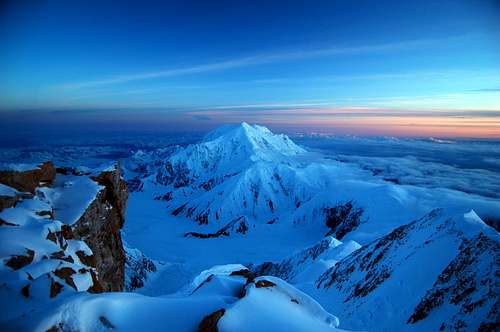
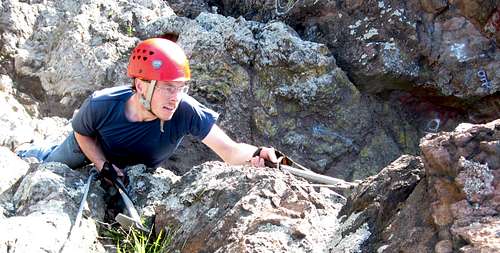
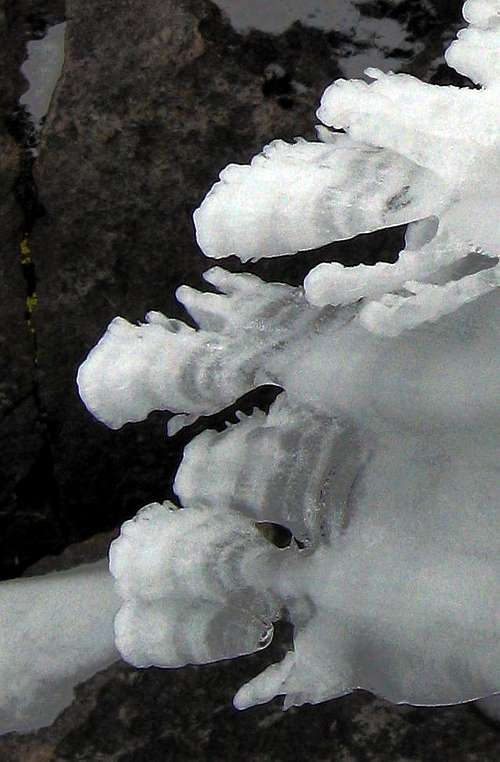
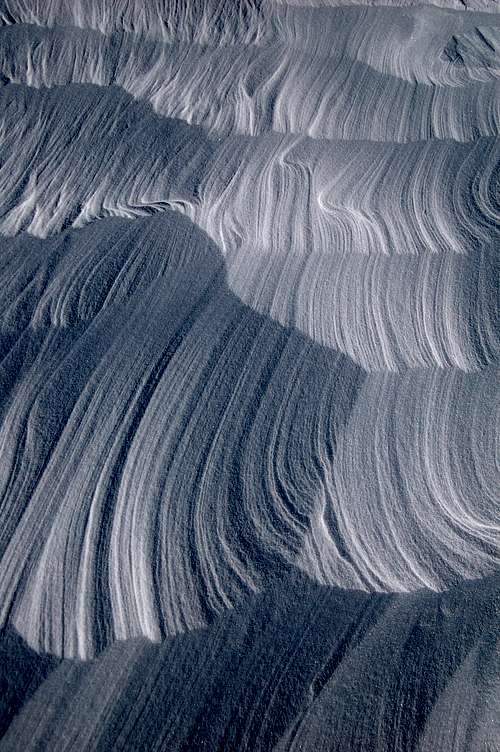



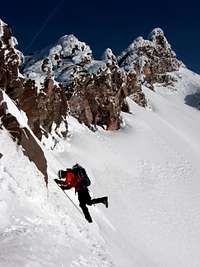













Comments
Post a Comment